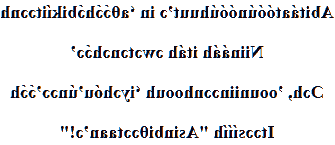Atsina love poem
‘aθɔ́ɔ́hɔ́bikíit’ɔ
Abitáatóóúnóóúhuut’ɔ in ‘aθɔ́ɔ́hɔ́bikíitɔɔnh
Niinááh itáh ɔwɔtɔnɔhɔ́ɔ’
Ɔɔh, ’oouniinɔɔnhoouh ‘iyɔhóu’únɔɔ’ɔ́ɔ́h
Itɔɔsíííh "Asinbiθɔɔtaan’ɔ!"


→ French poem ←
Atsina language
I like this translation of the love poem, i think that it will be part of my favorites, because it is in an extinct language, and there is so much poetry in it! On the other hand, it is difficult to find reliable informations about this Algonquian language and people who speak it.
Gros Ventre and arapaho are two dialects of the same language, with possible inter-comprehension.
Gros Ventre (Atsina, A’ananin, Ananin, Fall Indians, White Clay People, Aane, Ahahnelin, Ahe, autonym : ʼɔ́ʼɔ́ɔ́ɔ́níííh), is an Algonquian language of the High Plains, spoken by approximately 1000 Gros Ventre, who live in the Fort Belknap reservation in north-central Montana.
The Gros Ventres allied with the Pieds-Noirs in the 18th century, when their language was already differentiated from Arapaho. The French also called Gros Ventre the totally independent Hidatsas, who are different: beware of the confusion.
The Gros Ventres
The Gros Ventres are Algonquin Indians from North America met by the French, who named them so, during the American conquest.
Established since the 17th century, in Montana, Alberta (formerly part of French Louisiana) and Saskatchewan (Province of Canada), the Gros-Ventres live today in the Montana's reservations (2000 people) Fort Belknap.
Each winters they were divided into patrilinear bands for hunting, and every summer they gathered in circular encampments where the work of the skins constituted their main activity.